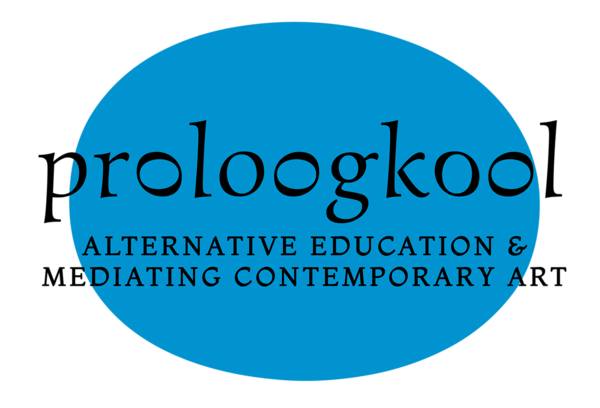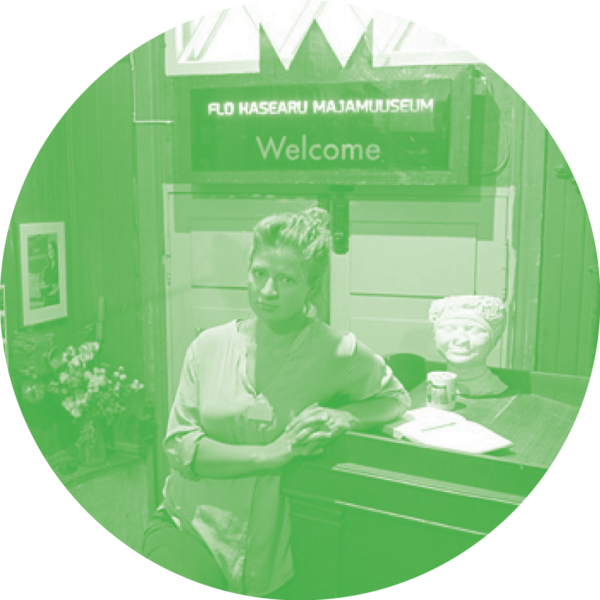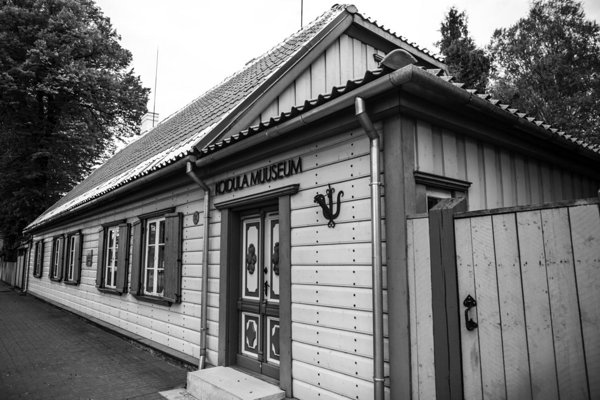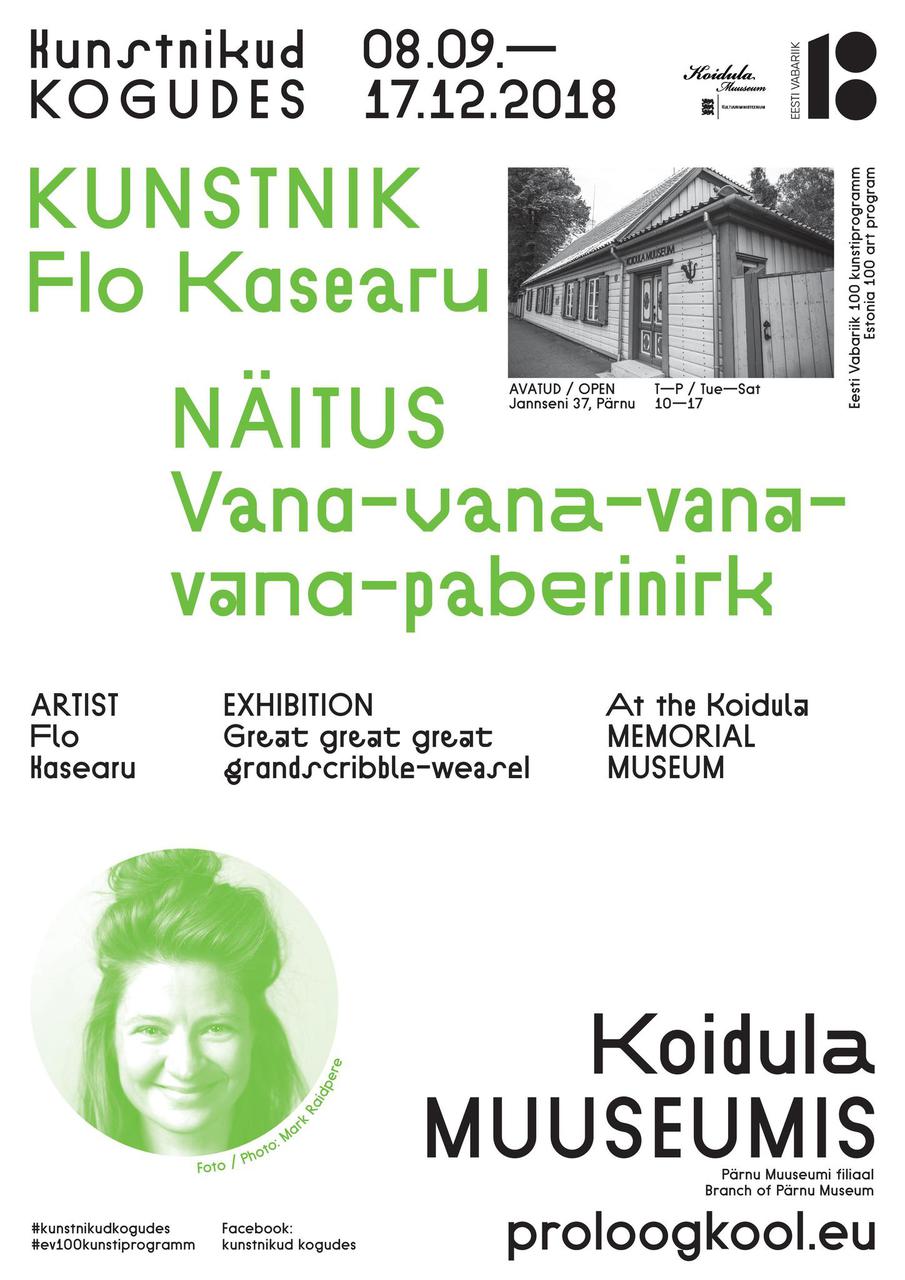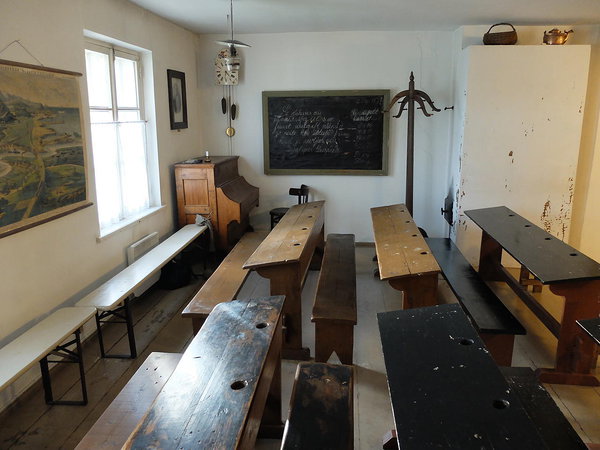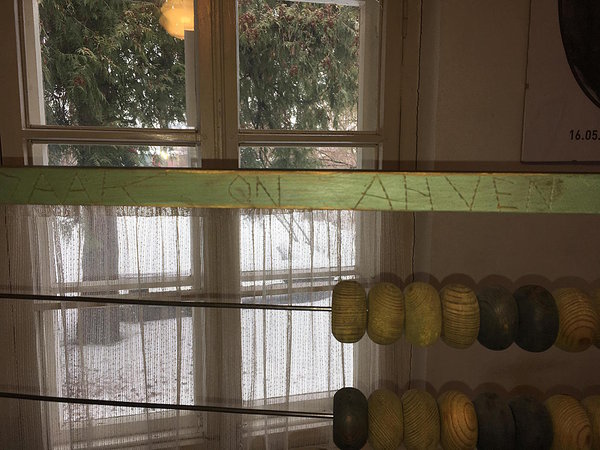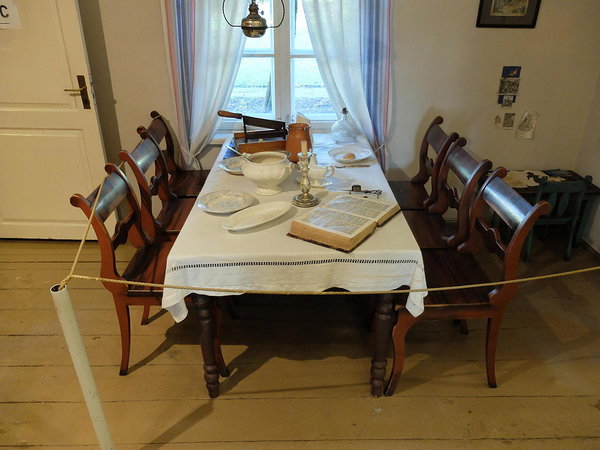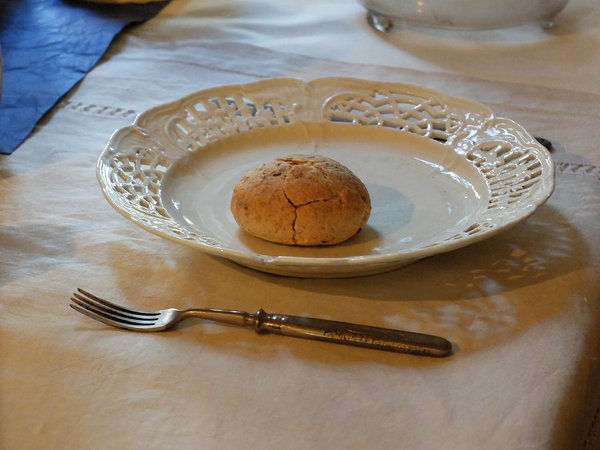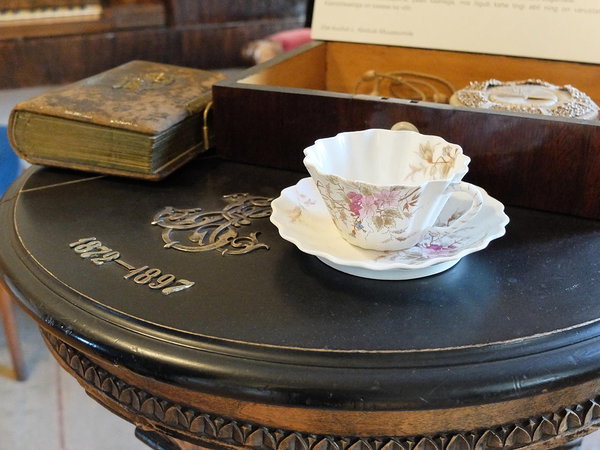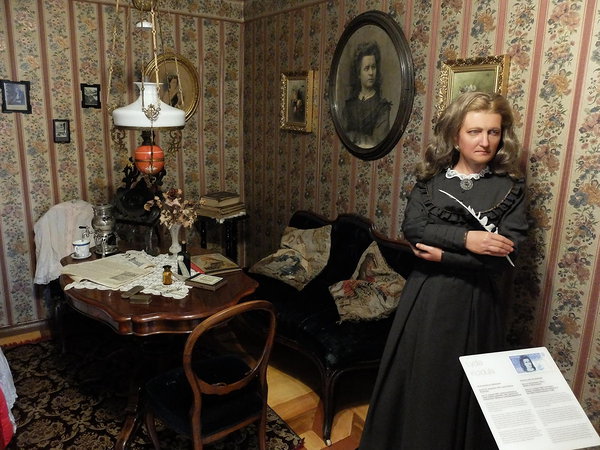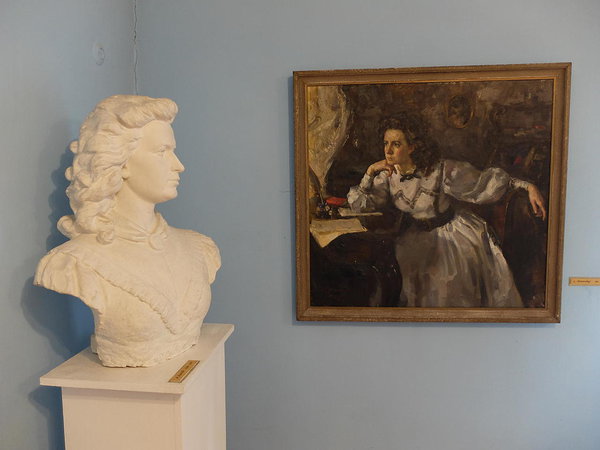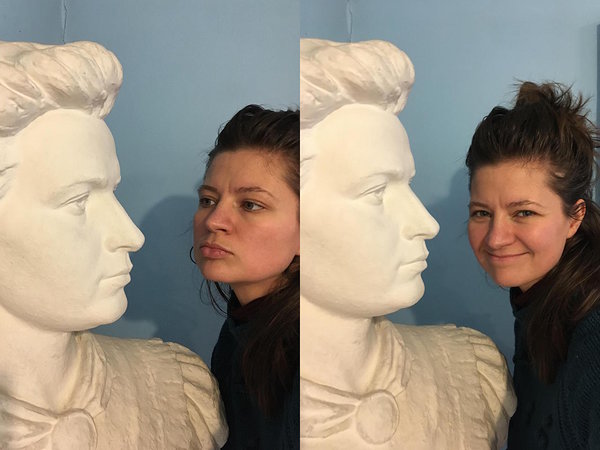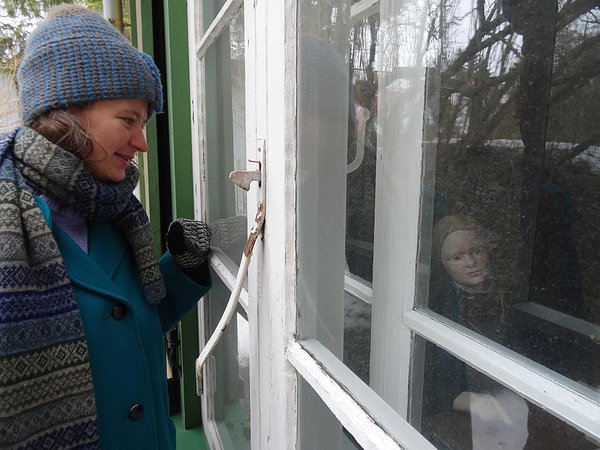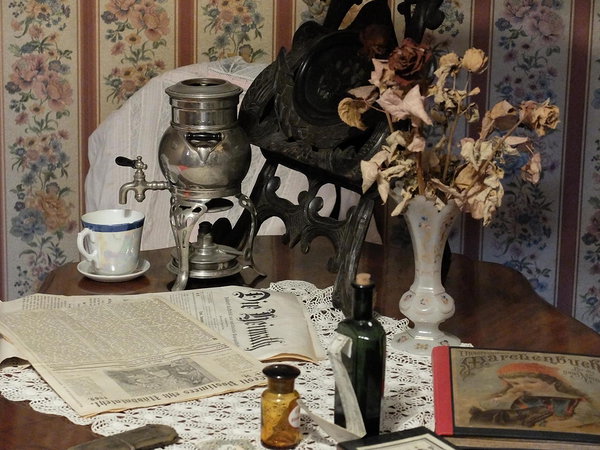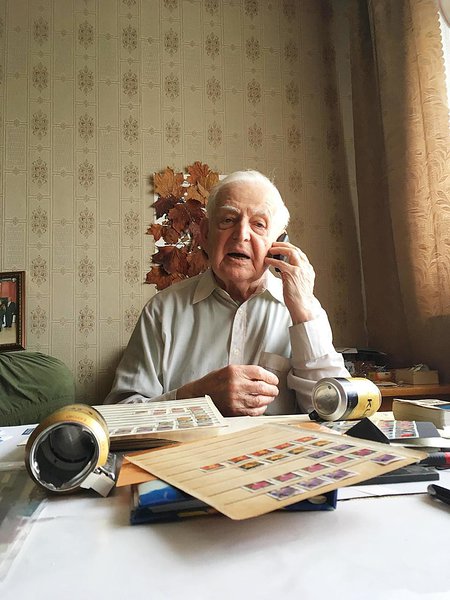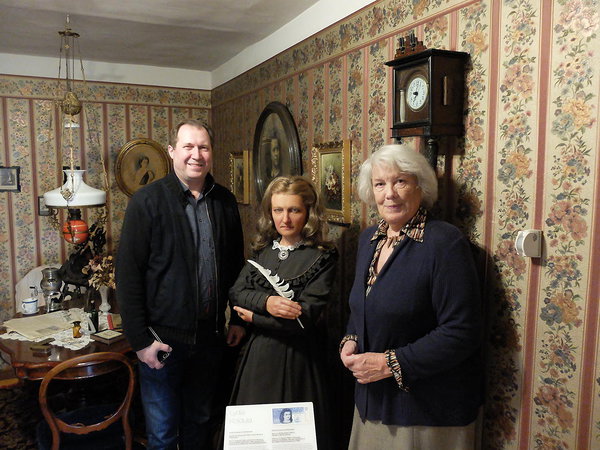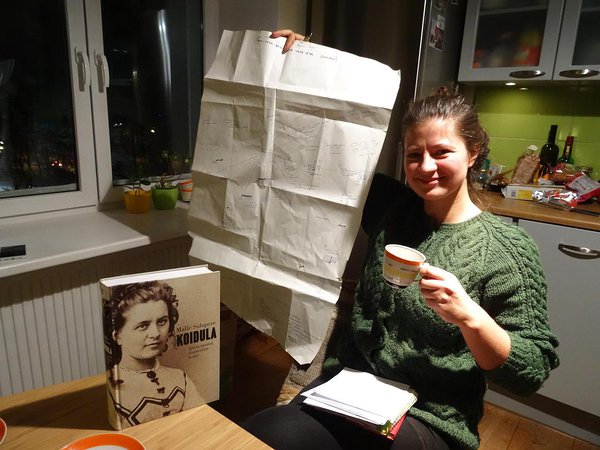Flo Kasearu + Koidula Museum
"Great-Great-Great-Grandscribble-Weasel"
07.09.–17.12.2018
Being in Koidula Museum and observing its daily life, Flo Kasearu was specifically interested in Koidula’s identity, which nowadays seems to be overshadowed by her own legend. Singer of the Dawn, as she was called, is a mythical figure who even now, 100 years later, plays an important role in our national pride and self-determination. As Kasearu opened Flo Kasearu’s House Museum in her Tallinn home in 2013, not waiting for a posthumous homage in the form of a museum as is tradition, it may also be the reason why her focus is more on the identity than on the museum.
During her residency, the artist picked some twists from the museum’s day-to-day business. By magnifying or reshaping them, she created a new trajectory inside the permanent exhibition, which gave the visitors an opportunity to not only get to know Koidula’s life and work but also to be more mindful of how the museum presents this story and what kinds of other ways there might be to continue or develop this narrative. The artist’s manner here was greatly more playful and humorous as her responsibility also differed from the museum’s, which is more official and dignified. But people’s lives are often much more multifaceted than the heroizing personal museums founded after their death let on, and contemporary art can in fact pose questions and suggest scenarios that build a base for further reflection and discussions.
Where did the title come from? Kasearu calculated that Lydia Koidula could have been her great great great grandmother. However, since she was not her grandmother, what passes from generation to generation is instead the nickname given to Koidula by F. R. Kreutzwald — Scribble Weasel!
Flo Kasearu (1985) obtained her bachelor’s degree in Painting and a master’s degree in Photography from the Estonian Academy of Arts, and she completed courses in Berlin University of the Arts. The centre of Kasearu’s oeuvre is the interpretation and redefining of traditions, national identity, and political and ideological situations. Since 2013, she has worked as the director of Flo Kasearu’s House Museum and her works of the past years are closely related to the environment of the museum. She has been one of the recipients of the artist’s salary since 2017. (Excerpt from Artists’ Spaces, edited by Merilin Talumaa and Annika Toots, EAA Press, 2017) READ MORELydia Koidula (1843–1886) was a famous poet, journalist and public figure of the Estonian national awakening and she spent her younger years in Pärnu. Koidula Museum operates in the building that she lived in from 1850 to 1863, and it is also the former Pärnu Ülejõe school where her father Johann Voldemar Jannsen, known as the father of Estonian journalism, worked as a teacher. In the museum, which is a branch of Pärnu Museum, visitors can learn about both of their lives and work in the context of Estonian national awakening; there is also a classroom typical of the mid-19th century and the Jannsen family dining room, and in the writing room, we can learn about the beginning of continuous journalism in Estonia that started with the Perno Postimees newspaper in 1857. Koidula Museum is also known for its summer theatre performances.
Flo Kasearu's residency took place during summer 2017 and 09.–16.03.2018.
The residency was supported by the Cultural Endowment's Pärnu expert group.
Public programme
07.09.2018 Exhibition opening16:00 Exhibition tour with the artist08.09.2018
14:00 Visit to Flo Kasearu’s exhibition Festival of the Shelter at Pärnu Women’s Shelter
16:00 Artist’s talk at Koidula Museum and exhibition tour
Thank you: Tõnu Narro, Pärnu Museum, Elmar Trink, Piret Pedanik, Heneliis Notton, Margo Samorokov, Epp Kubu, Aivo Luhaoja, Mihkel Lember, Laura Pählapuu, Kristi Tasuja, Henno Sepp, Sidney Lepp, Cultural Endowment’s Pärnumaa expert group
Gallery
